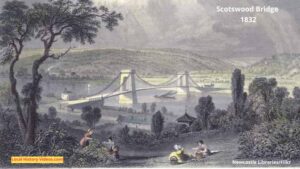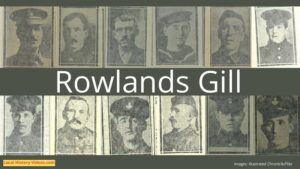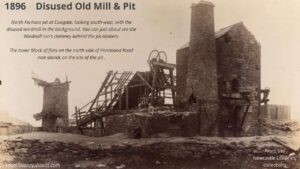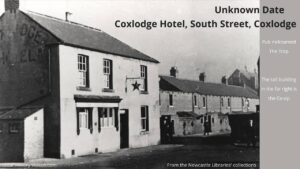Enjoy a glimpse of history through old images of Jarrow, Tyne & Wear, in North East England, UK.
Old Jarrow Streets
Want a clearer view?Click on the top half of the old photo to see it in a larger format:
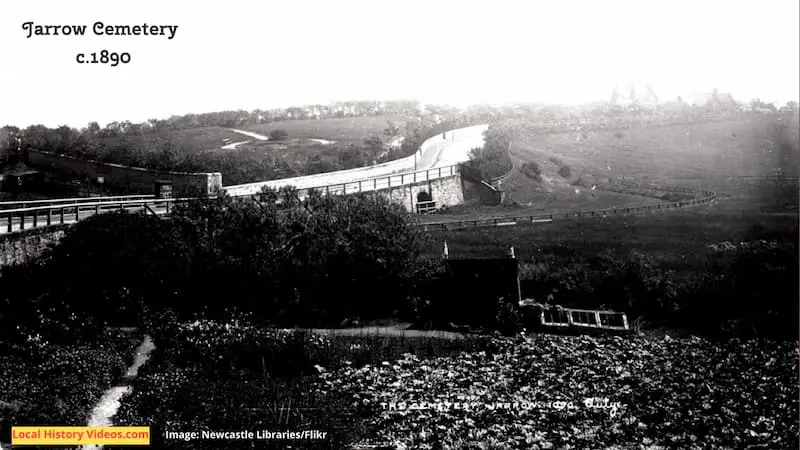
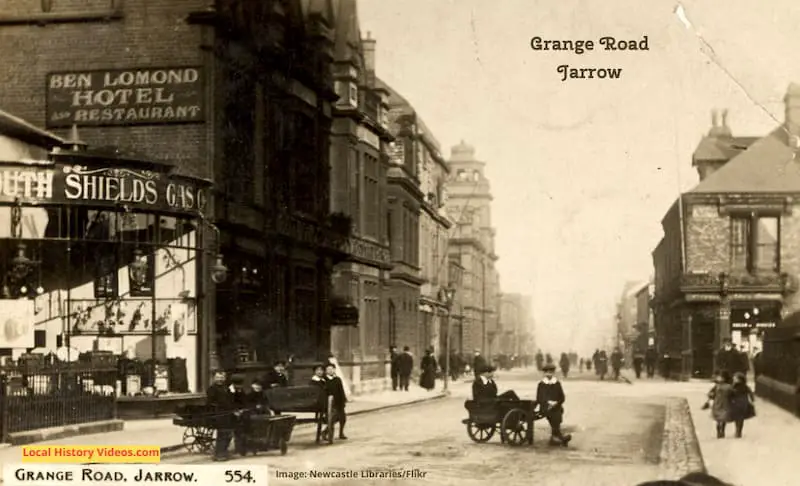

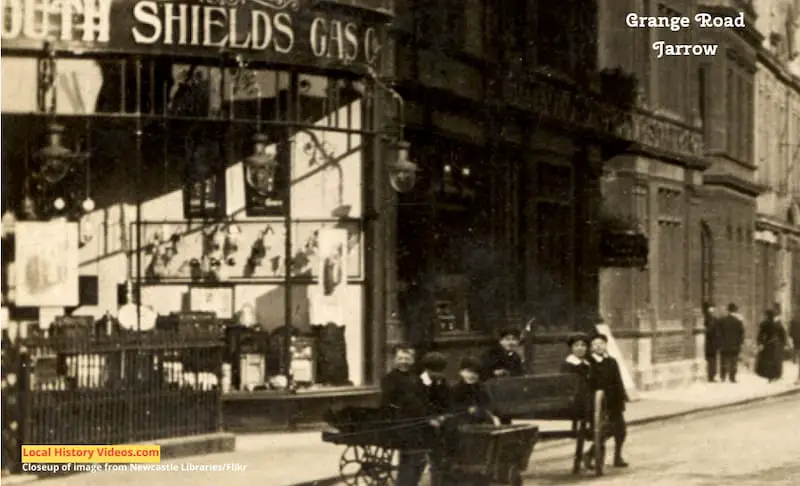
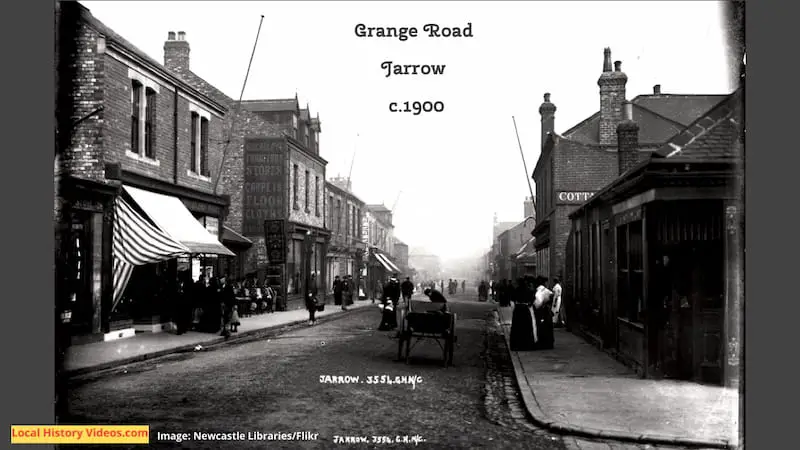
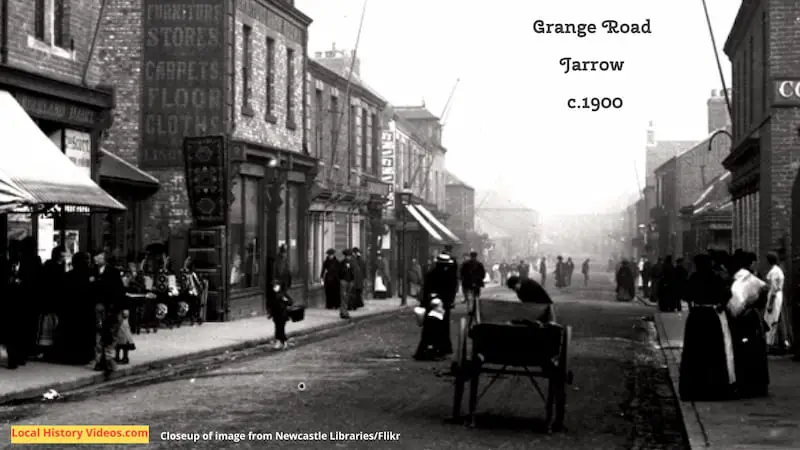
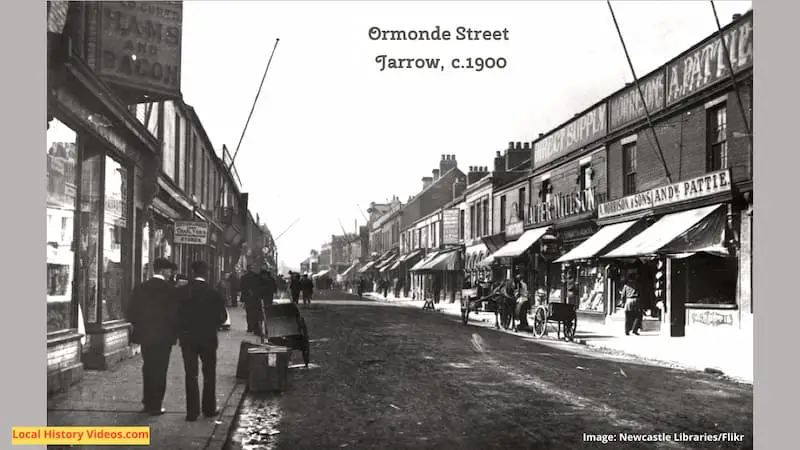
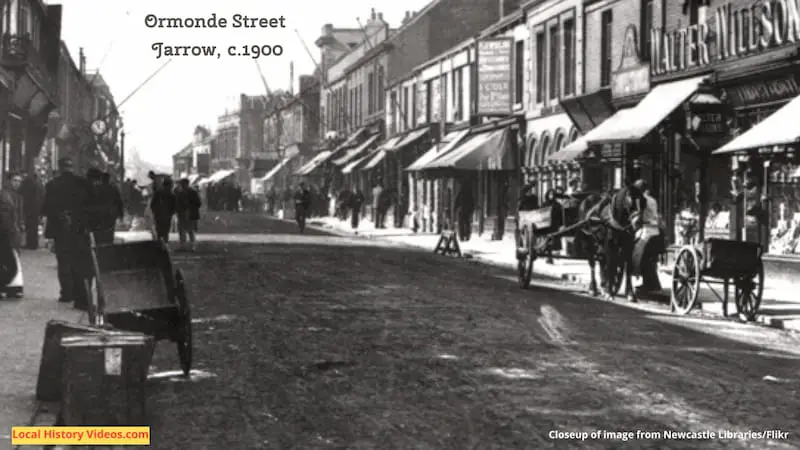
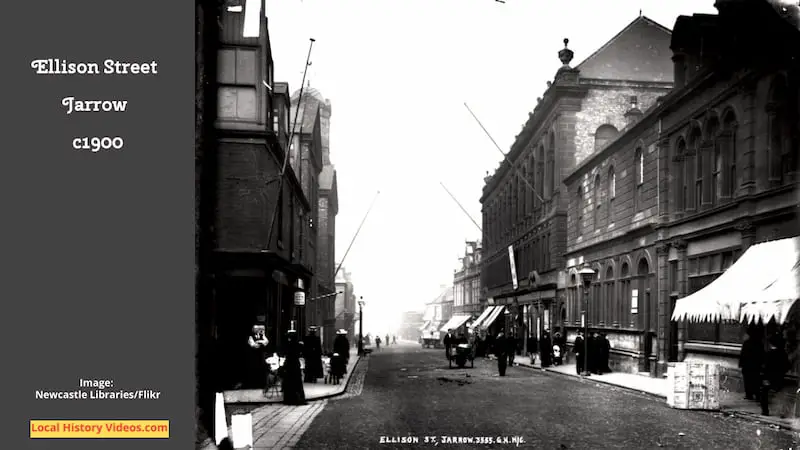
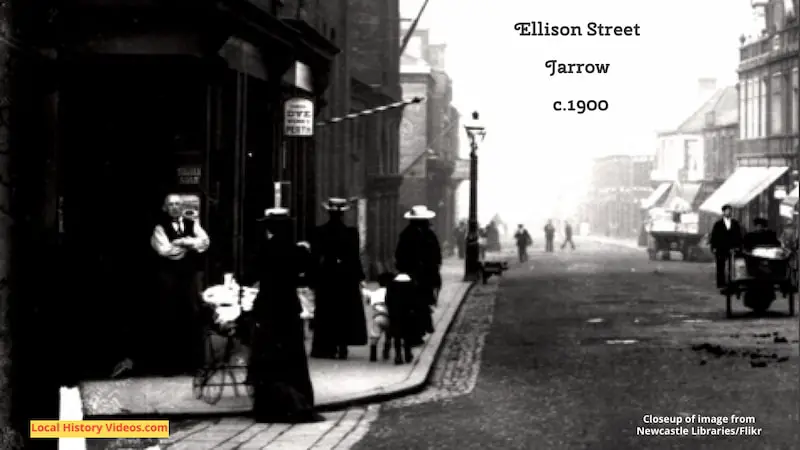
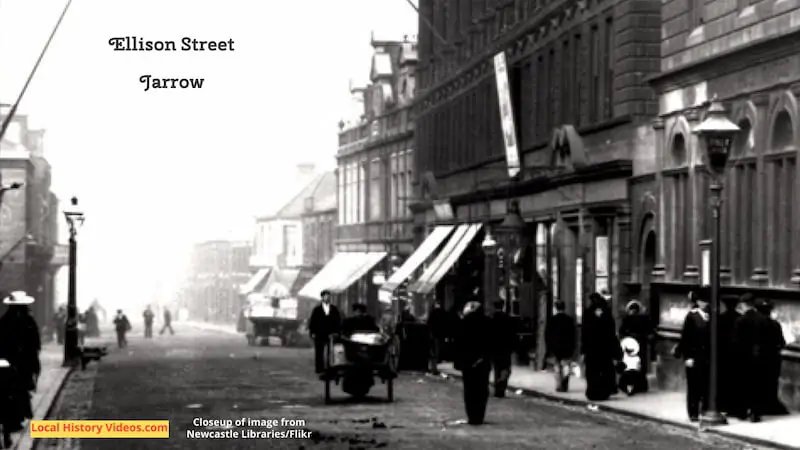
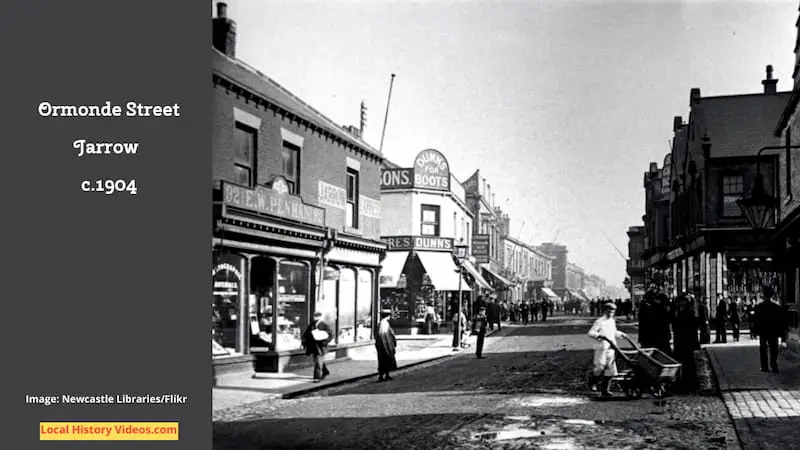
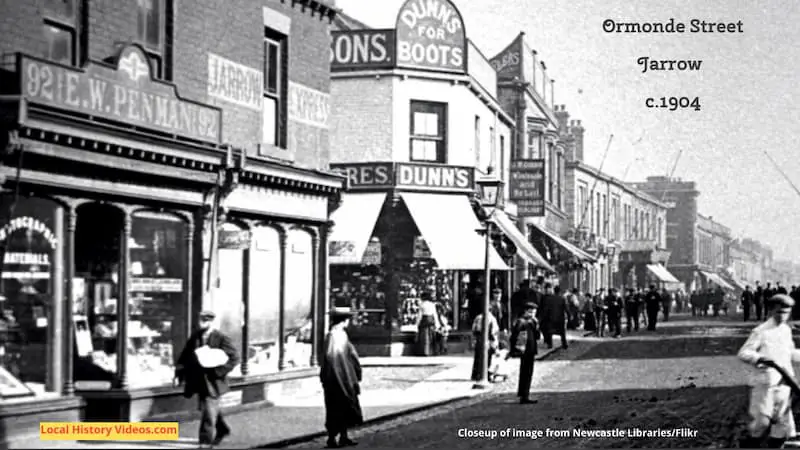
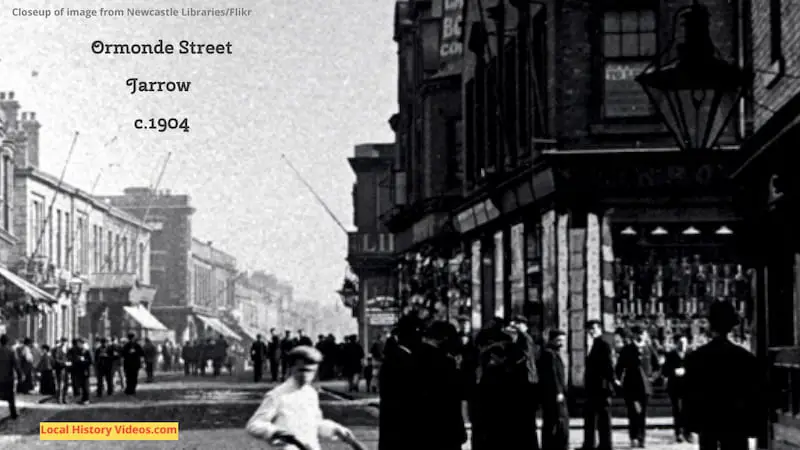

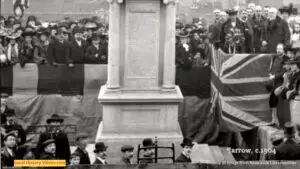
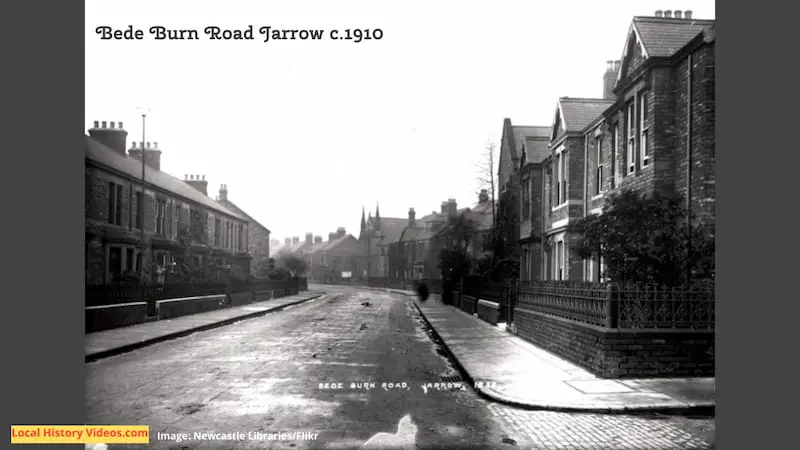

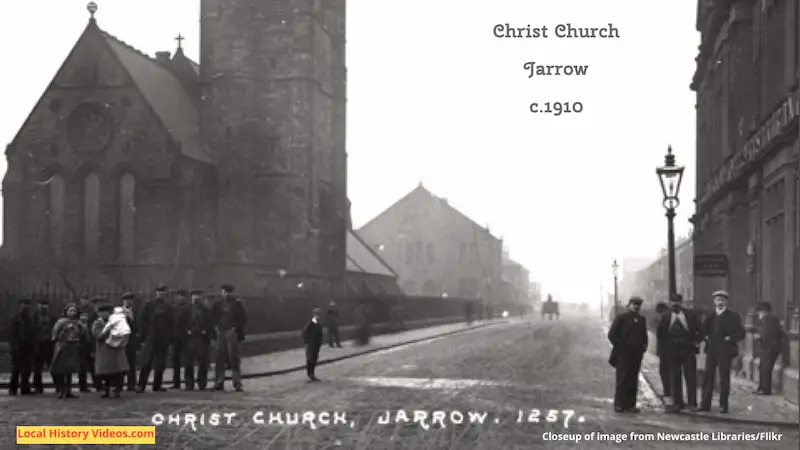
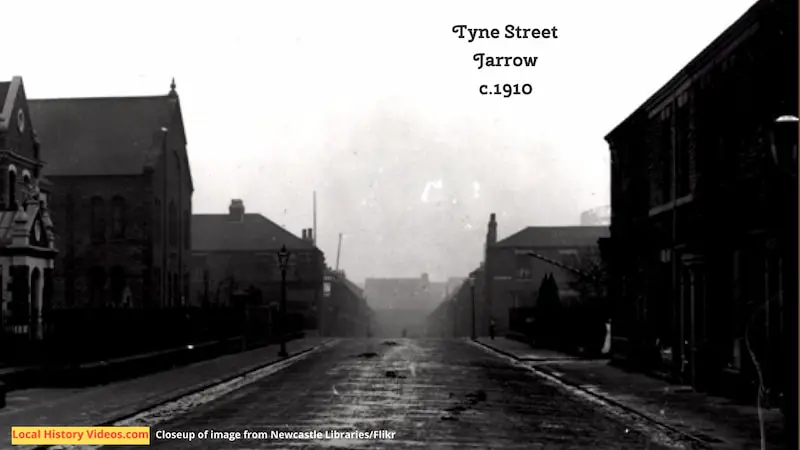
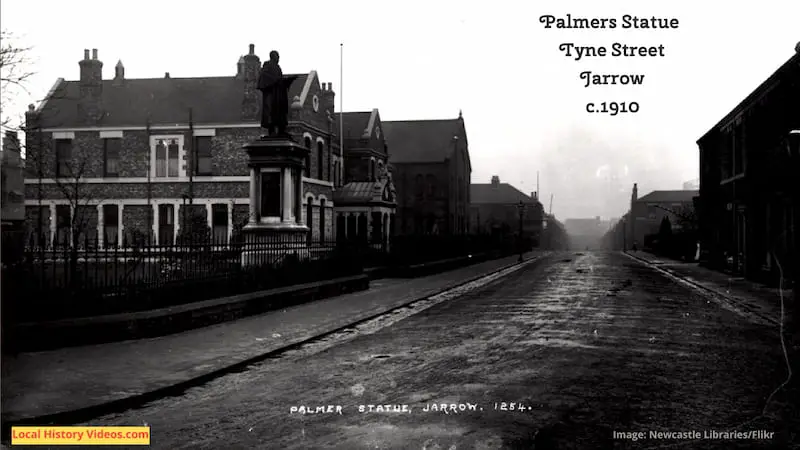
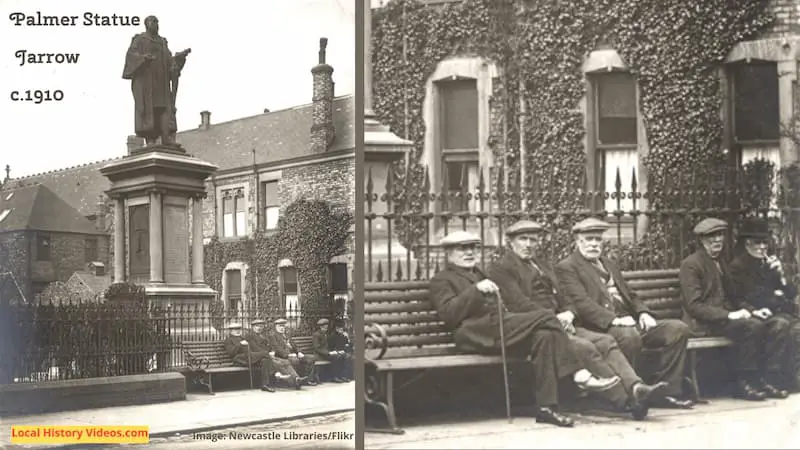
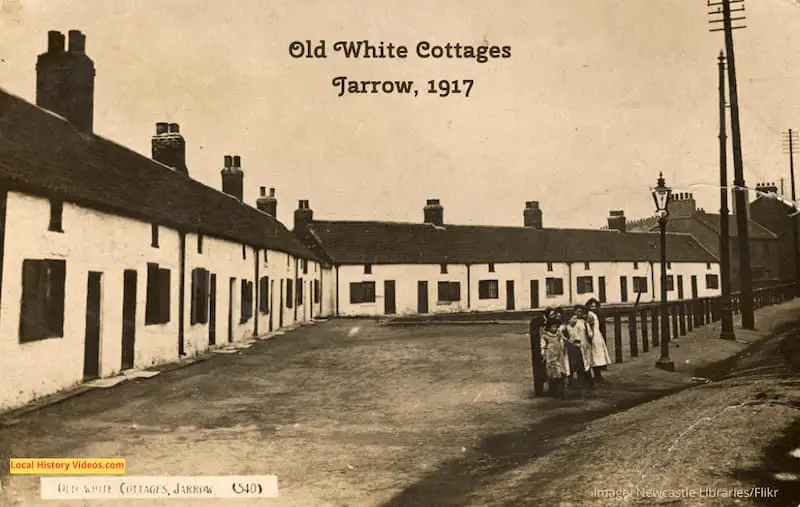
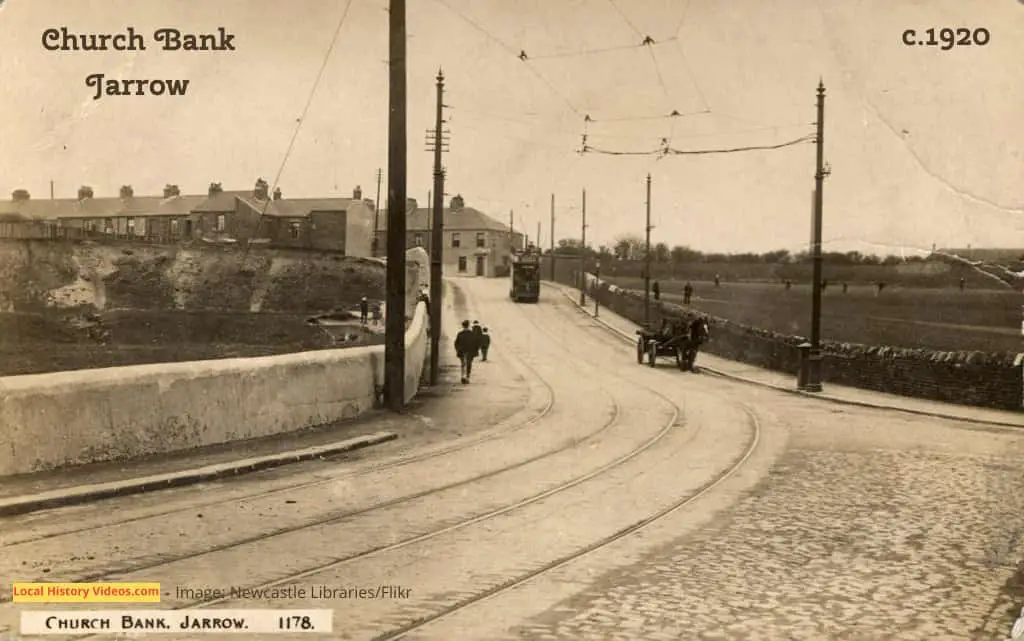
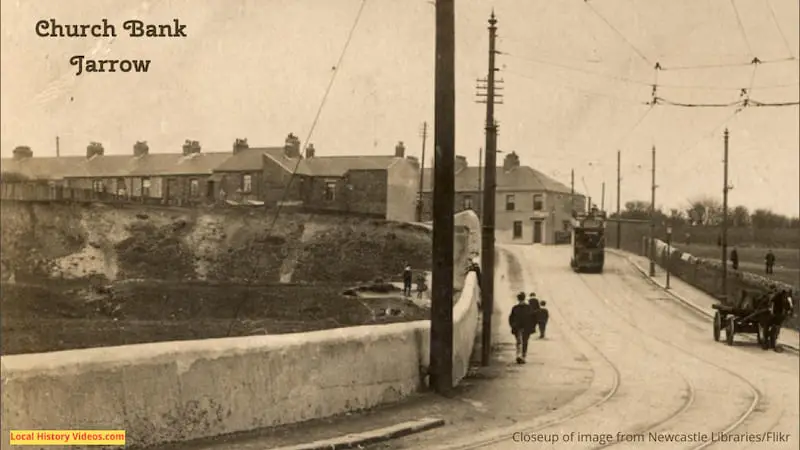
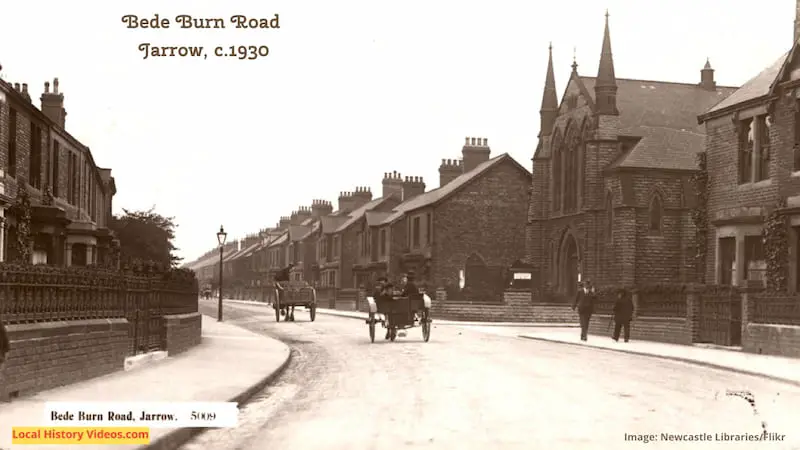
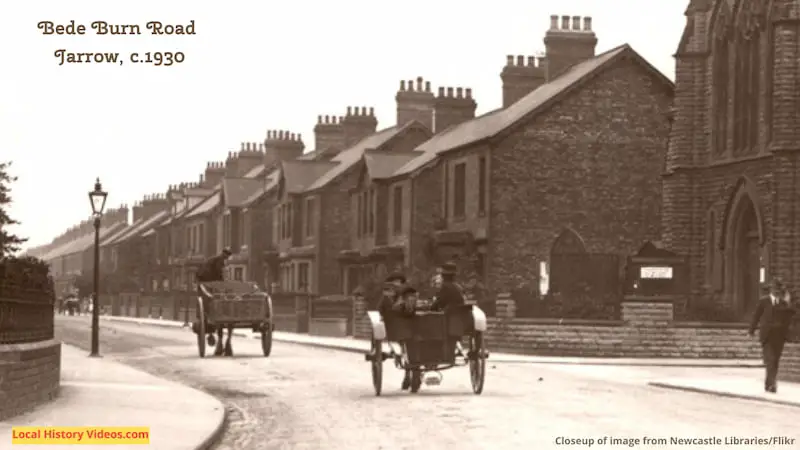
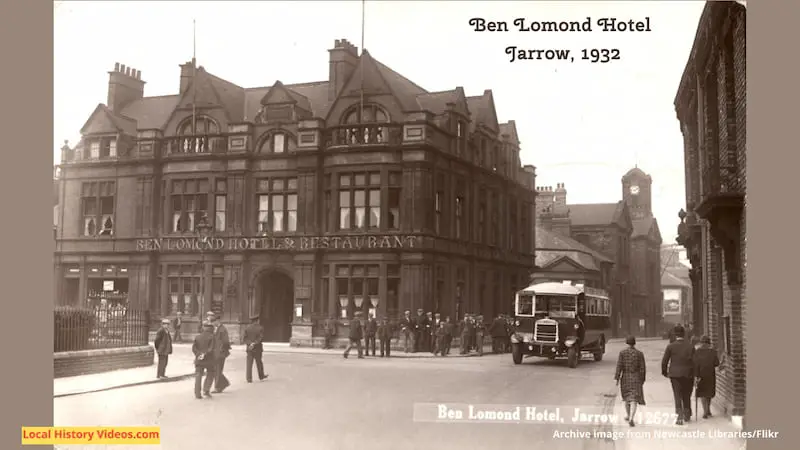
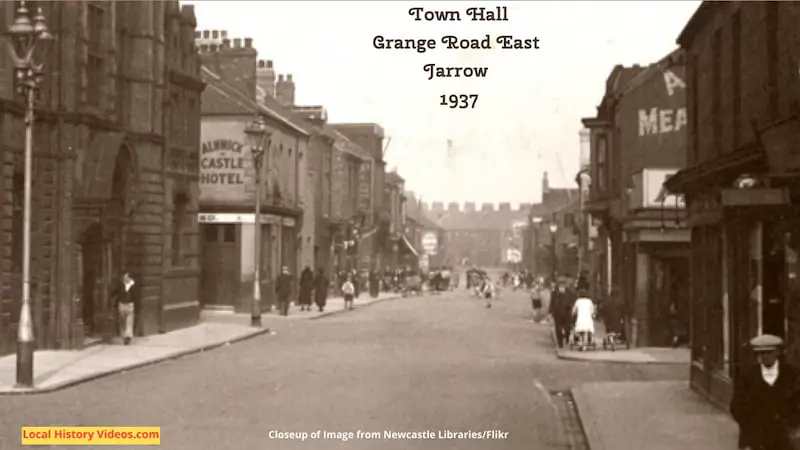
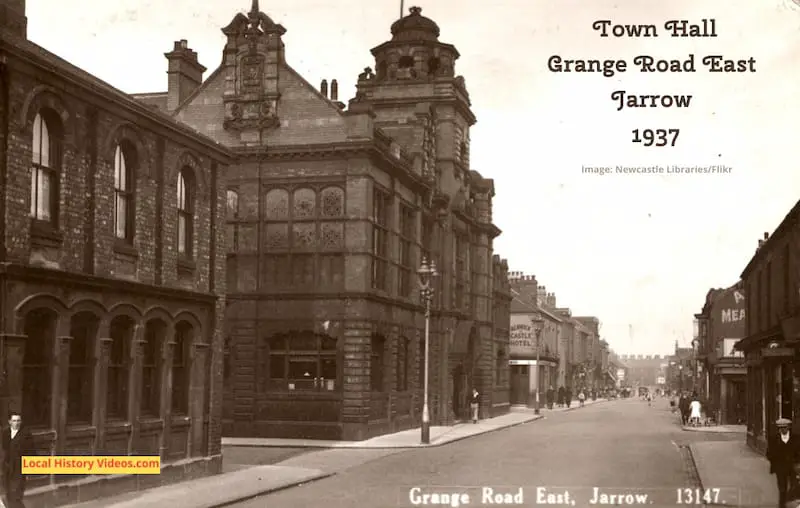
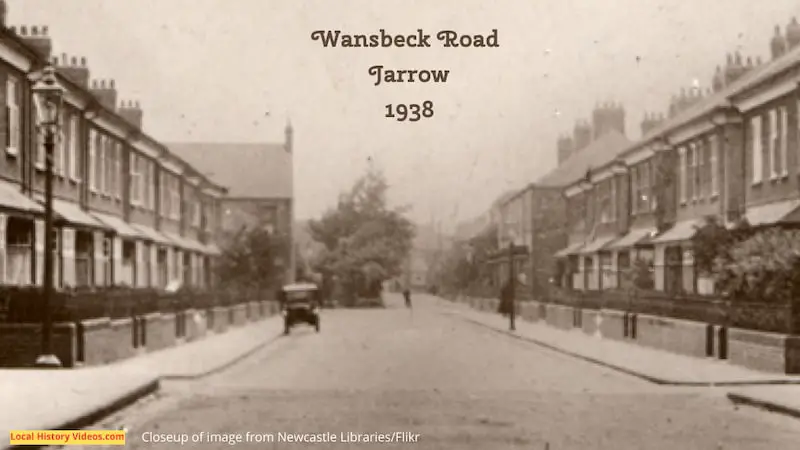
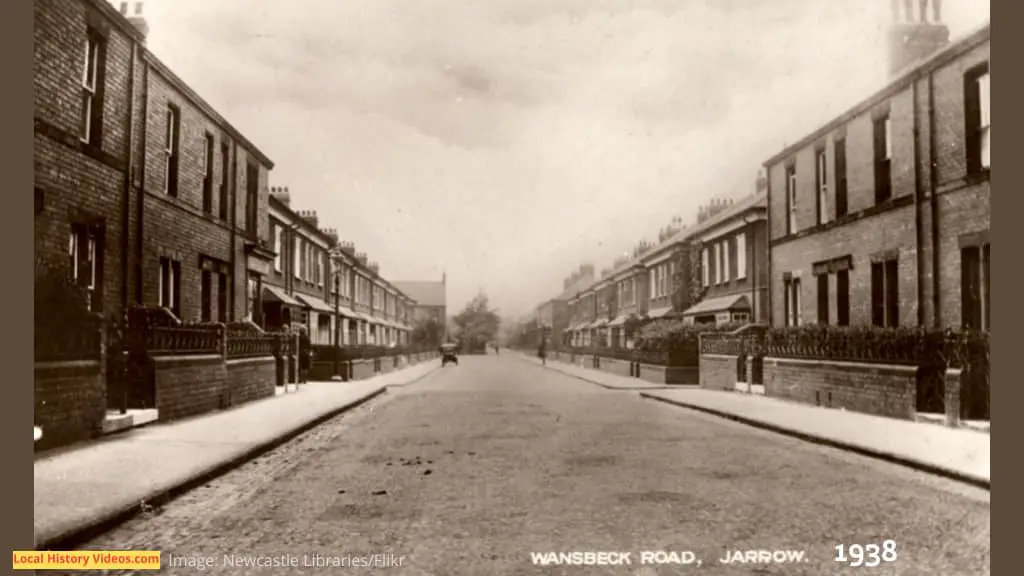

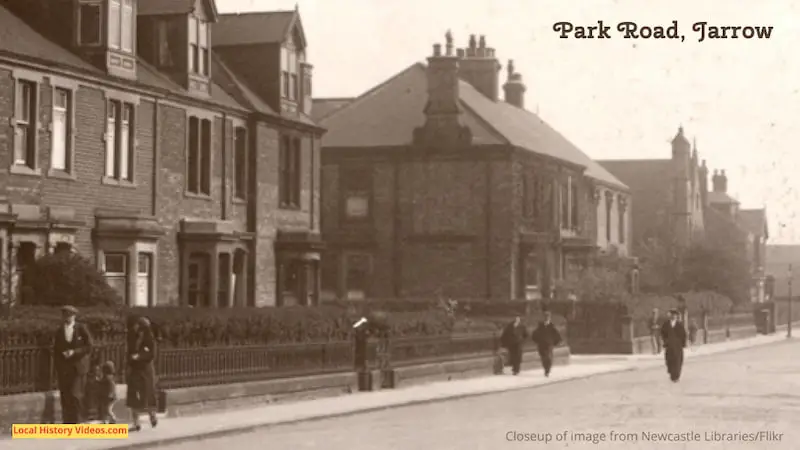
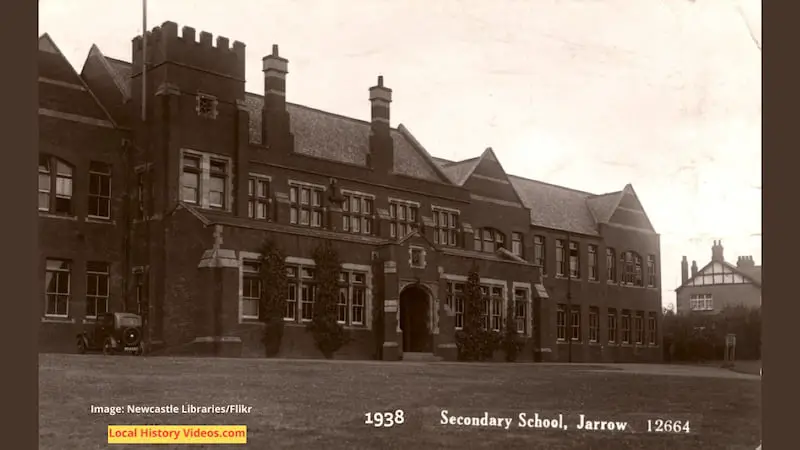
St. Bede
There has been a settlement at Jarrow at least since the 8th century, when the early Christian monk and scholar Bede lived here. His monastery was dissolved under Henry VIII in the 16th century.
Old Images of Jarrow’s Religious Sites
Click on the top half of these old pictures and photos of religious sites from Jarrow’s past to see a larger version of the image:

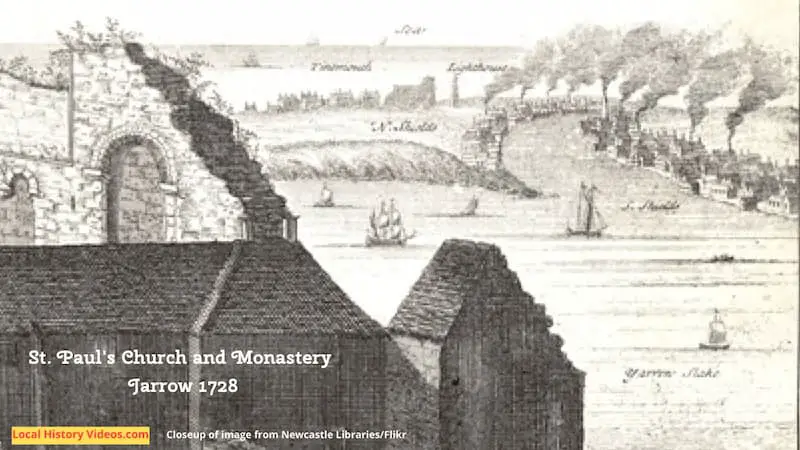
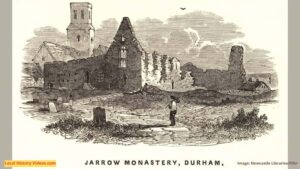
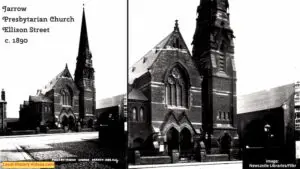
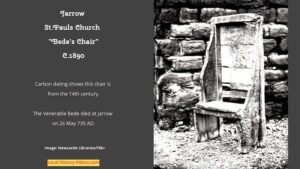
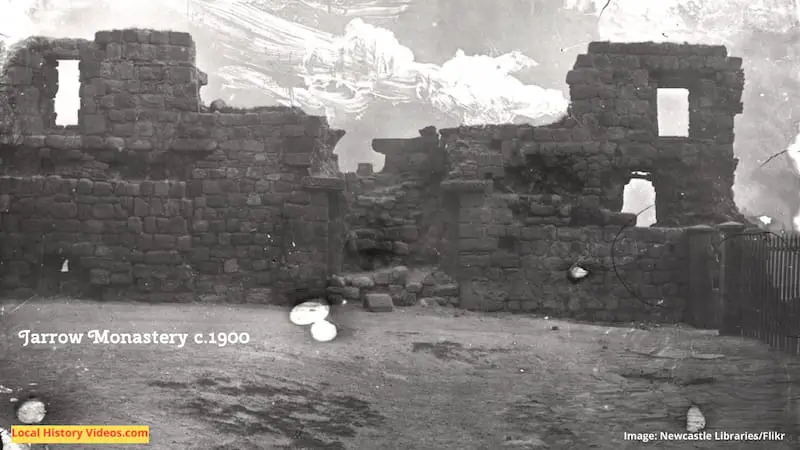
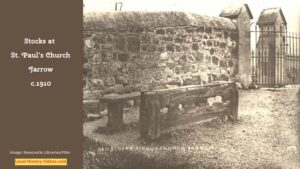
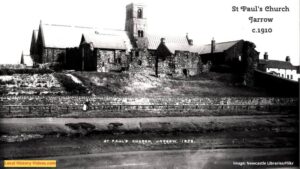
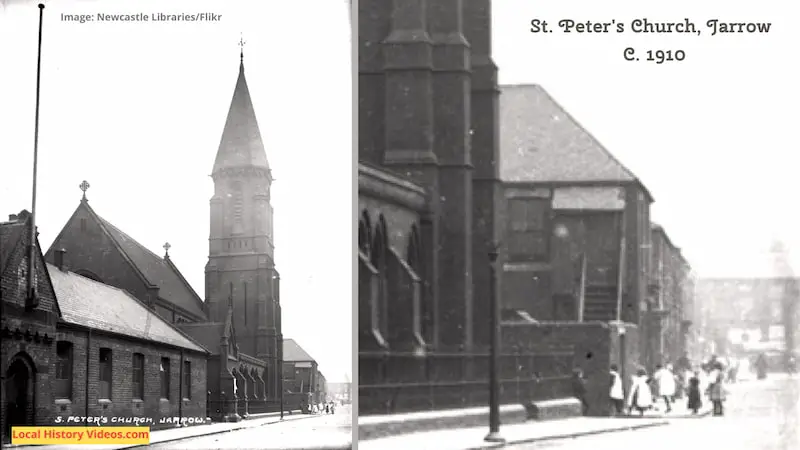
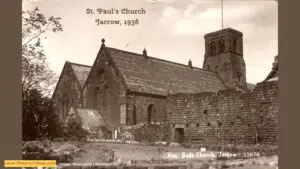
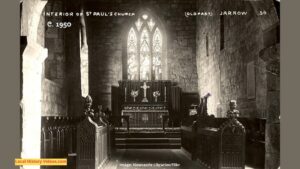
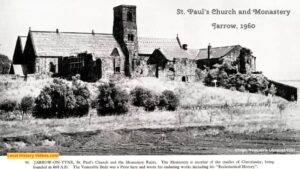
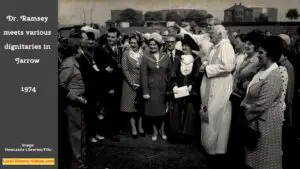
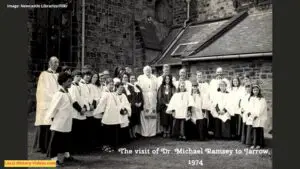
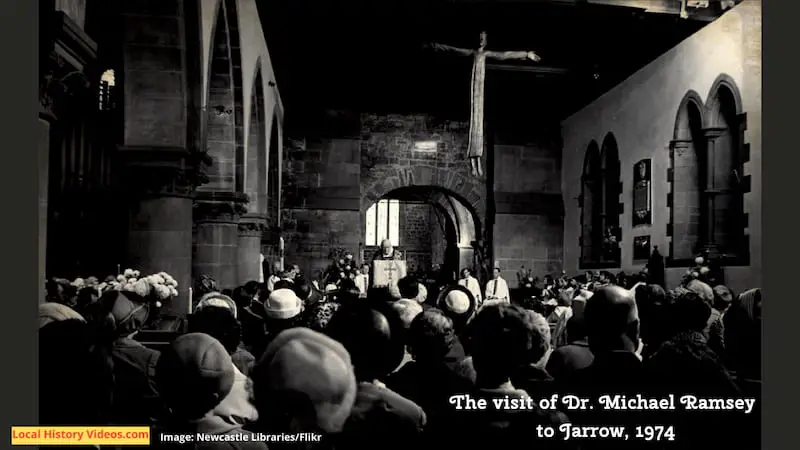
Jarrow’s Roman Catholic Pilgrimage 1935
In 1935, more than 50,000 Roman Catholics made a pilgrimage through Jarrow, marking the death of the Venerable St. Bede 1,200 years before. It took two hours for the procession to pass through the local streets, observed by crowds of spectators.
The bodies involved included the Catholic Guild, women’s organisations, the Children of Mary, Sisters of Charity, Sisters of Mercy, monks, and even a delegation of Cardinals, led by the Archbishop of Westminster (Dr. Arthur Hinsley:1865–1943) and the Archbishop of Liverpool (Dr. Richard Downey:1881—1953).
This newsreel includes a glimpse of the streets behind the field close to the monastery.
Pilgrimage To Jarrow (1935) – – British Pathé on YouTube
Jarrow’s Jutland Day Parade 1933
The largest sea battle of the First World War, involving 250 ships and around 100,000 men, took place over two days from 31 May 1916, at Jutland.
The British lost 14 ships and over 6,000 men, and the Germans lost 11 ships and over 2,500 men.
British control of the North Sea was maintained for the rest of the war.
Sailors and veterans marched through Jarrow’s streets in 1933, to attend a church memorial service to their fallen comrades.
In Memory Of Fallen Comrades (1933) – British Pathé on YouTube
Jarrow’s Industrial Past
The coal industry boomed here in the 19th century, two centuries after it started, as the Industrial Revolution increased demand for fuel and developed ways to transport it at scale.
In 1851, Jarrow’s first shipyard opened. More than a thousand ships were to be made in the town over the next eight decades. But the end of the Great War, later known as the First World War, brought about a significant downturn in world trade conditions, government policies saw national unemployment running around 10% for much of the 1920s, and local industrial mismanagement was rife.
So in 1934, Palmer’s Shipyards, one of the town’s largest employers, announced its closure, planning replacement of the site as a modern steelworks plant. The employers’ organisation British Iron and Steel Federation had different plans for the future of the industry, helping to frustrate plans for the Jarrow site.
Living conditions had always been rough for Jarrow’s workers, but unemployment would increase the number of destitute families.
Old Images of Jarrow’s Industry
Click on the top half of these old pictures and photos of Jarrow’s industrial past to see a larger version of the image:
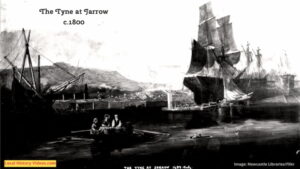
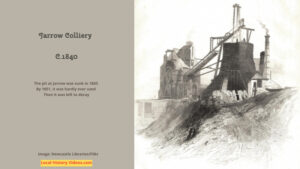
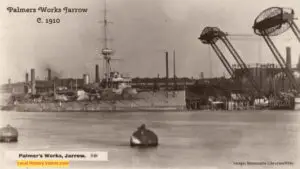
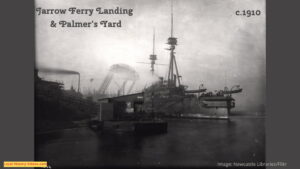
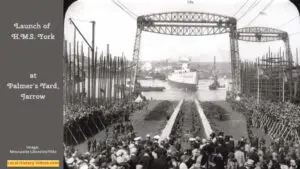

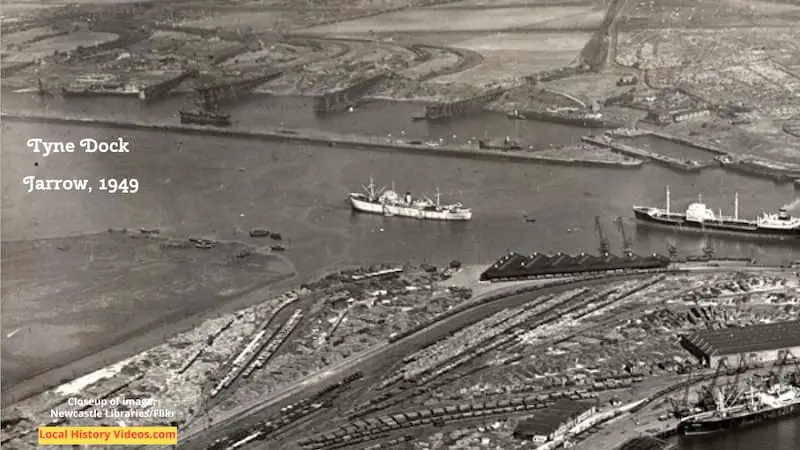
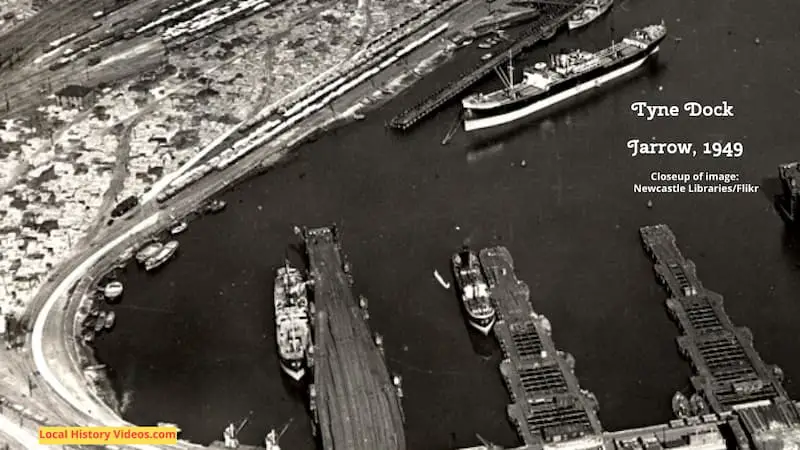
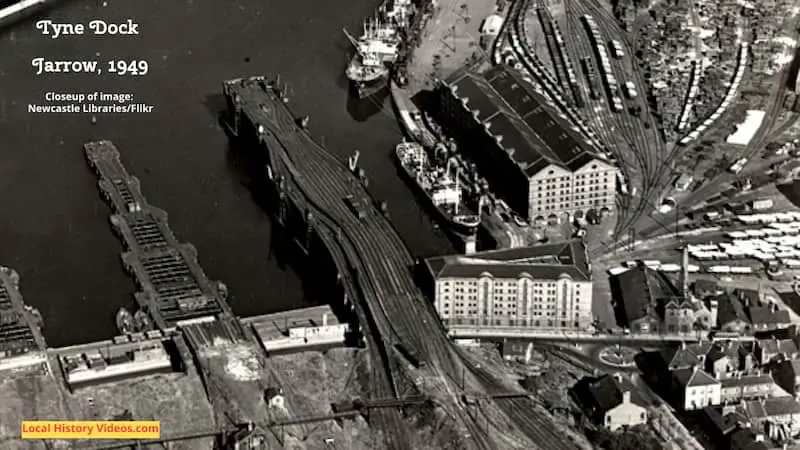
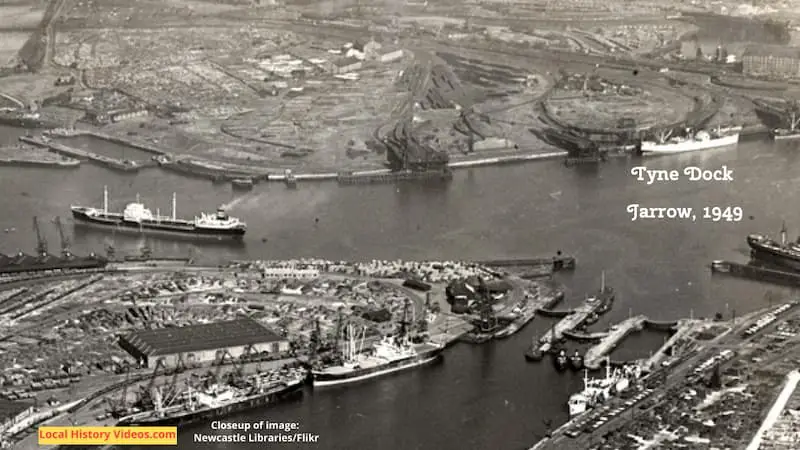
Jarrow’s Colony “Down South”
In 1935, some bright spark came up a novel solution to cure the woes of Jarrow’s unemployed men: send 1,200 of them down to form a colony on Bedfordshire farmland.
After years of unemployment, perhaps all the participants thought it was champion, but I notice we aren’t shown where the men and their families actually live.
The narrator’s tone is condescending, to put it mildly.
Twelve hundred Tyneside men placed on land in an experiment to aid distressed area (1935) – British Pathé on YouTube
Jarrow Park
West Park in Jarrow opened in 1876. In the Victorian era visitors could drink from the elegant water fountain, while the 1930s attraction for children was the paddling pool.
Click on the top half of these old photos of Jarrow Park to see a larger version of the image:
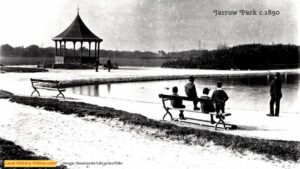
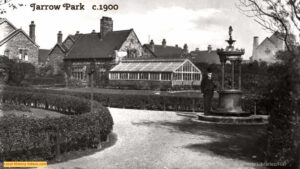
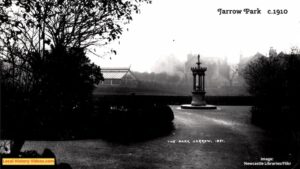
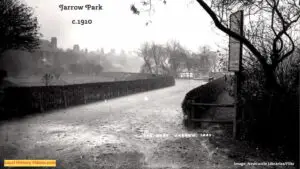
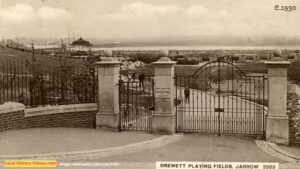
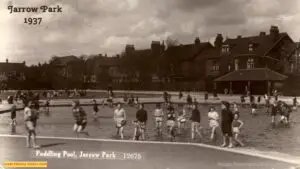
End of The Olympic 1935
In this newsreel from 1935, we see a few seconds of Jarrow as the crowds come out to see the arrival of the Olympic. The ship was to be broken up here at a cost of £100,000, bringing 18 months of work to the yard.
Olympic Brings Cheer To Jarrow – British Pathé on YouTube
The Famous Jarrow March
The British Communist Party set up the National Unemployed Workers’ Movement (NUWM) in 1921, organising ‘hunger marches’ to London in the 1920s and 20s, named after a march of London’s unemployed to Hyde Park in 1908.
Jarrow’s local political, commercial and religious groups took this model and started the Jarrow March in October 1936, supporting a group of 200 local men walking all the way to London, with a petition from the town to be presented to the House of Commons at the start of the new parliamentary session on 3 November 1936.
Support from the Labour Party and TUC was lacking, and the march did not achieve the employment investment the town needed. But over time, the Jarrow March grew into a major historic event of its time, a mark of communities standing up for their dignity and survival.
Much of this newsreel of the Jarrow March is filmed in London, but shows the final, rainy stretch of this long and difficult walk.
Jarrow Unemployed March To London (1936) – British Pathé on YouTube
Jarrow’s Oxygen Factory Explosion 1938
Ignore the ‘Durham’ title on this archived newsreel. Hansard records the Parliamentary questions about the explosition at the British Oxygen Company’s Jarrow works.
The explosions which occurred in the compressing room of the factory were the result of a fire which spread from the original ignition.
With additional safeguards there should be no problem continuing this industry close to local family homes, determined the MPs safely sitting in the House of Commons chamber.
That’s quite a claim, given the car squashed flat by debris, the utterly destroyed bicycle, and the broken windows of nearby homes shown in this newsreel.
“Both the police and the fire brigade behaved with very great courage, and in particular the chief of the fire brigade who stopped his own men from going into the compressing room and himself went in, in circumstances of very great danger.”
Mr LLoyd, Parliamentary debate, Wednesday 2 March 1938.
Explosion In Durham (1938) – British Pathé on YouTube
End of The Berengaria 1938
When the Berengaria was brought into a Jarrow shipyard for breaking up, it was the largest ship ever to have undergone this process.
The German ship had originally been called the Imperator, and joined the Hamburg-Amerika Line after being launched by the Kaiser Wilhelm II in 1913. Following the Great War, the ship was eventually handed to the Cunard Line as reparations for the sinking of the Lusitania. Becoming the company’s flagship, she was renamed the Berengaria.
Sir John Jarvis bought the ship and sent it for breaking up in Jarrow, with the aim of alleviating some of the unemployment in the area.
First is some silent footage, showing the streets of Jarrow, starting at 1:35 (hopefully my settings will play here from that point). After that is the released newsreel which focuses on the ship and the breaker’s yard.
TRANSPORT / ECONOMY: ‘Berengaria’ ship to be broken up / will provide employment in Jarrow (1938) – British Pathé on YouTube
Berengaria’s Last Voyage – Jarrow (1938) – British Pathé on YouTube
Dismantling the ShipYard 1938
Jarrow’s giant cableway was the largest in Britain, but with shipbuilding now in decline, the cableway was dismantled for scrap metal.
Giant Cable Way Dropped – Jarrow Aka Giant Cableway (1938) – British Pathé on YouTube
Queens Road Trees 1966
Trees between 20 and 40 feet tall were planted at Queen’s Road Housing Estate, one of Jarrow’s modern council housing developments, in 1966, watched on by a large crowd of local residents.
‘instant Trees’ (1966) – British Pathé on YouTube
Tyne Tunnel Opening 1967
Queen Elizabeth II officially opened the Tyne Tunnel on 19th October 1967. Planning and legislation for the tunnel had started more than twenty years before!
Built for 25,000 cars a day (this newsreel says 30,000), the original toll for cars was 2s 6d (12.5p).
She was accompanied by Prince Philip, and Barbara Castle was one of the notable politicians present. The guard of honour was formed by the 1st Battalion, the Northuberland Fusiliers, who had just returned by Aden, a British colony from 1937 to 1963.
Queen Opens New Tyne Tunnel (1967) – British Pathé on YouTube
Howdon-Jarrow Ferry
Ferries were running across the Tyne between Howdon and Jarrow at least from 1854, if not before. In the twentieth century, a major development was to introduce ferries to transport cars and vans across the river.
Once the Tyne Tunnel was opened in 1967, the service was no longer needed, and permanently closed.
Click on the top half of these old photos of the Jarrow Ferry to see a larger version of the image:
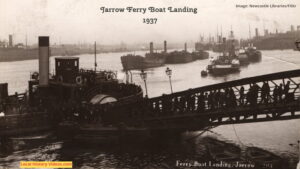
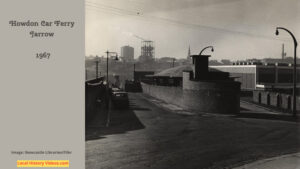
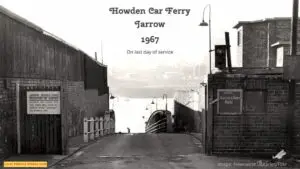

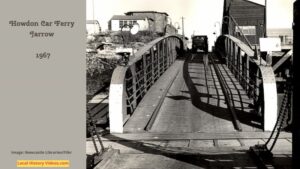
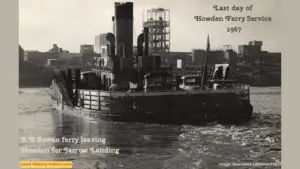
The Post Office Directory of Durham and Northumberland
by Kelly and Company
Published in 1879


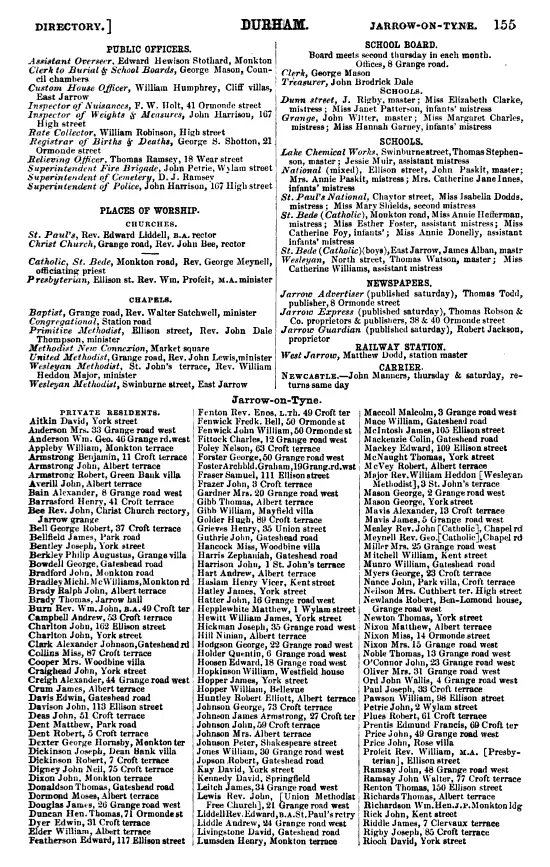
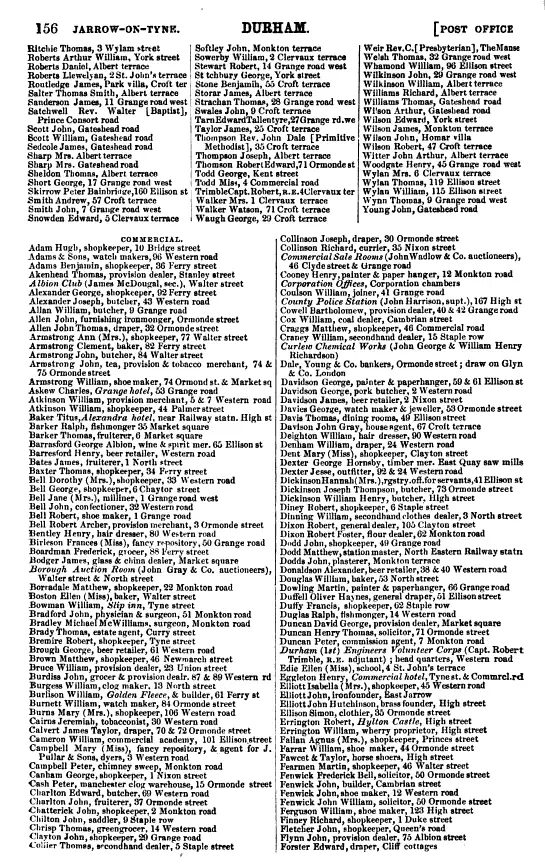
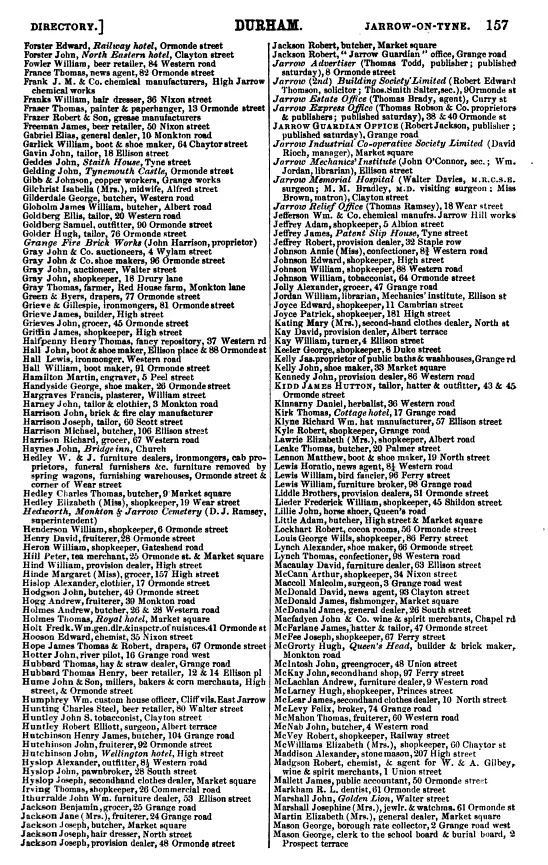
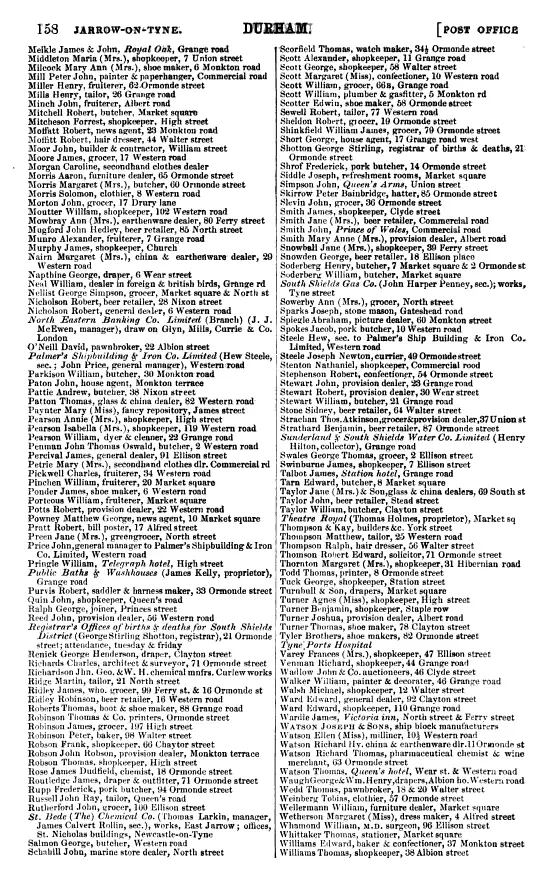
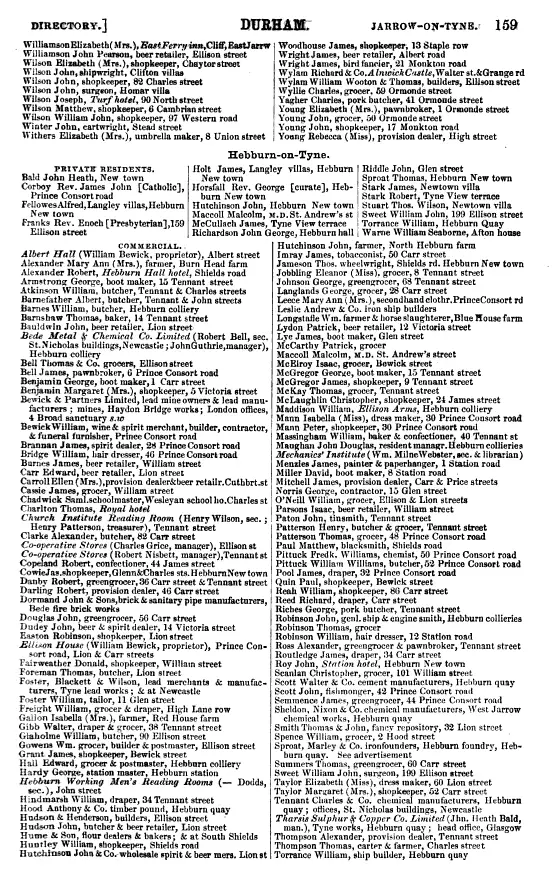
More Pictures of Old Jarrow
Old Jarrow in South Tyneside, England, enjoyed through historic photos, vintage pictures & archive film. Browse history in these fascinating old images of a bygone era on my Pinterest board at:
https://www.pinterest.co.uk/LocalHistoryVideos/jarrow-old-photos-pictures
More about Tyne & Wear
- A Brief History of Scotswood Bridge (With Old Photos & Film)Glimpse history through old images of Scotswood Bridge, which links the West End of Newcastle and the western fringes of Gateshead.
- A Glimpse of History at Rowlands GillA glimpse of history at Rowlands Gill, in North East England.
- Chirton, North East EnglandEnjoy a glimpse of history about Chirton in North Shields, Tyne & Wear, North East England, UK.
- Cowgate, Newcastle Upon Tyne: History in Old ImagesEnjoy a glimpse of history through old images of Cowgate, in Newcastle upon Tyne, Tyne & Wear, England, UK.
- Coxlodge, Newcastle upon TyneEnjoy a glimpse of history about Coxlodge in Newcastle upon Tyne, Tyne & Wear, North East England, UK.
- Dinnington, Newcastle upon TyneEnjoy a glimpse of history about Dinnington in Newcastle upon Tyne, Tyne & Wear, North East England, UK.
- Earsdon, North TynesideEnjoy a glimpse of history about Earsdon in North Tyneside, Tyne & Wear, North East England, UK.
- East Boldon, West Boldon, and Boldon CollieryEnjoy a glimpse of history about the Boldons in South Tyneside, Tyne & Wear, England, UK.
- East Rainton, SunderlandEnjoy a glimpse of history about East Rainton in Sunderland, Tyne & Wear, England, UK.
- Eighton Banks, GatesheadEnjoy a glimpse of history about Eighton Banks in Gateshead, North East England, UK.

